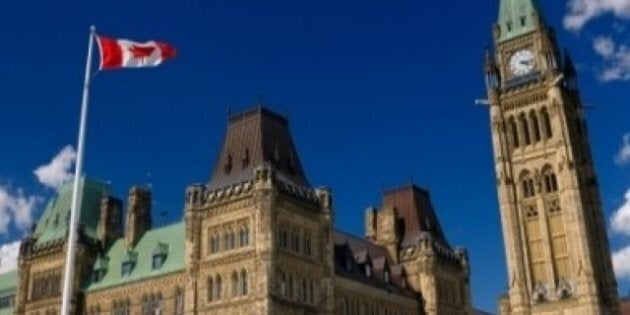
As debate about income inequality mounts, a new study underscores how important public investment in social programs like education and health care is in narrowing the rich-poor divide.
At a time when Ottawa prepares to beat back the deficit with public spending cuts, the findings also show that the effect of Canada’s social safety net on narrowing the income gap waned in the early 2000s.
“There seems to be a decline in the role of transfers on inequality in Canada,” says Andrew Sharpe, director of the Centre for the Study of Living Standards in Ottawa, and co-author of the study by the New York-based Levy Institute of Bard College.
More on income inequality at Mind The Gap: CEO Compensation Jumps 27 Per Cent As Wages Stagnate..Toronto's Cabbagetown A Striking Example Of Disappearing Middle Class..Which Canadian Cities Are Seeing The Fastest Ghettoization?..FULL COVERAGE..
Efforts to quantify the rich-poor divide often focus on basic income -- namely, how much households earn in a given year. But in their comparison of income inequality in the U.S. and Canada, the authors of the working paper, released in January, endeavour to take a more comprehensive approach.
According to Sharpe, the aim is to “go beyond standard measures of income” to include other factors that play a role in household wealth: taxes and transfers; government expenditures on goods and services, such as housing, education and health care; time spent on household tasks; and the value of major assets.
Including these other elements when calculating income inequality tends to have a narrowing effect, he explains, “because everybody gets government services and everybody does household work.”
The vast amount of data required to make such comparisons limited the scope of the study somewhat -- to 1999 and 2005 in Canada, and 2000 and 2004 in the U.S. -- but the snapshots give some indication of how much these other factors have been affecting inequality in recent years.
The authors calculated inequality using two different measures. The first, dubbed Money Income (MI), only takes into account gross income and government transfers. However, the second, called the Levy Institute Measure of Economic Well-Being (LIMEW), also includes the effect of the other factors outlined by Sharpe, many of which are related to the strength of public services and programs.
On both sides of the border, the gap, measured with the Gini coefficient, the standard unit used to gauge inequality, was significantly narrowed when these other sources of wealth were taken into account.
In Canada in 1999, for instance, when inequality was calculated using the LIMEW, the Gini coefficient was 17 per cent lower; in 2005, meanwhile, it was 13 per cent lower.
The findings show that factors besides income (such as government spending on education and health care) do a better job at smoothing out inequality in Canada than in the U.S. But they also demonstrate that, from 1999 to 2005, this package of benefits became less effective at levelling the playing field.
This likely came as little surprise to Sharpe, who recently advocated for greater government investment as a means of curbing income inequality.
In a report on reducing disparities published in November by Canada 2020 -- a think-tank established to “create an environment of social and economic prosperity” -- Sharpe was among a group of public policy experts and economists who called on Ottawa to “analyze and consider the longer term effects of income polarization, and consider the strategic policy reforms to head off a looming problem.”
Among other fixes, the report suggests addressing the growing gap by imposing an inheritance tax, enhancing child benefits and increasing investment in post-secondary education.
“Public services are … an essential element of the redistributive effort of government,” Sharpe wrote. “Erosion of public services will thus tend to increase inequality, something that is not often at the forefront of discussion when cuts are proposed.”
Debate about growing income inequality -- and the role of government in narrowing the gap -- has been mounting in recent months.
In December, the Organization for Economic Cooperation and Development observed that Canada’s system of taxes and transfers is less redistributive than most other member countries.
“Reforming tax and benefit policies is the most direct instrument for increasing redistributive effects,” the agency maintained. “Large and persistent losses in low-income groups following recessions underline the importance of government transfers and well-conceived income-support policies.”
WHICH PROVINCES HAVE THE WIDEST INCOME GAP?
Also on HuffPost
